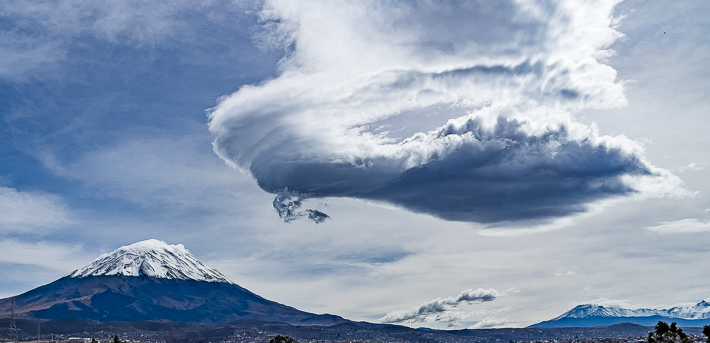
We have visited Peru on four occasions in the past, but never made it to Arequipa, Colca Canyon nor Lake Titicaca, so we decided to make that a destination this time. On our drive from Arequipa (a UNESCO heritage site dubbed the White City), we saw this flying saucer shaped cloud hovering near the Misti volcano mountain top — a 19 second time-lapse is viewable below.
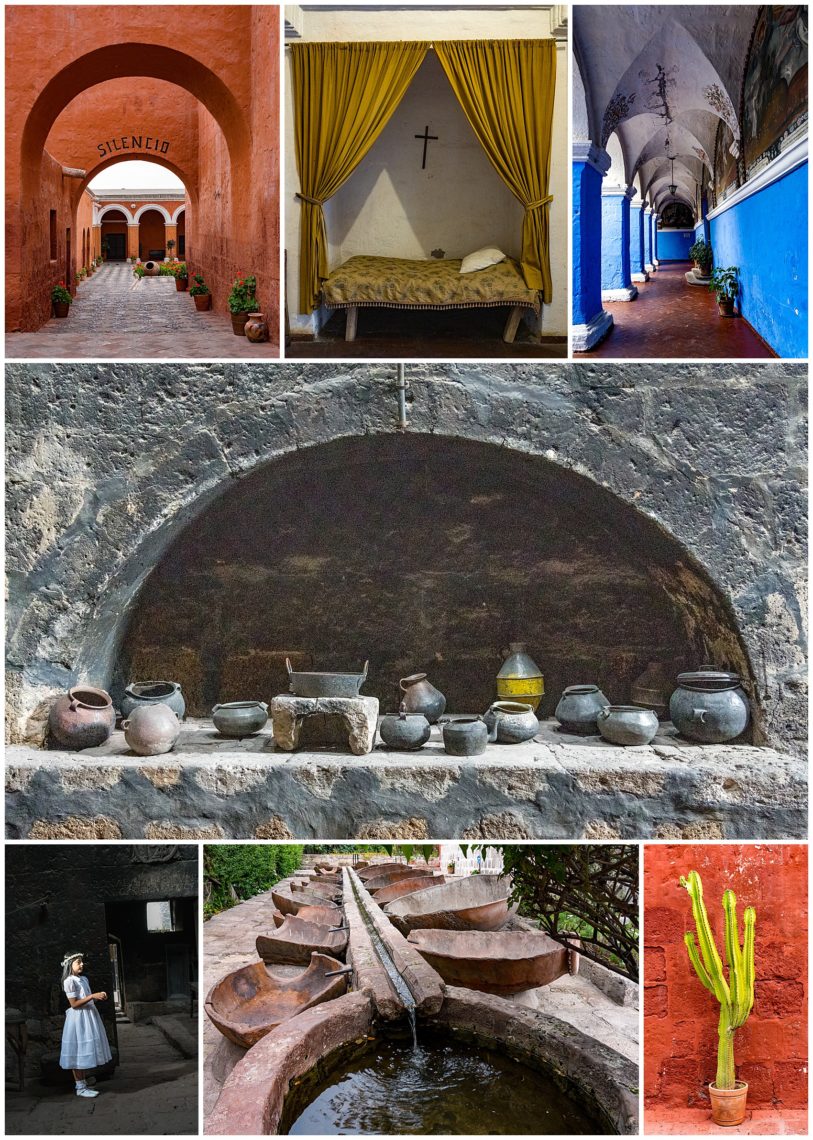
One of our first stops in Arequipa was to see Santa Catalina Convent, built in the 16th century. Almost all openings, both between buildings and inside rooms were arched-shaped, to help the building withstand the frequent earthquakes in this region.The largest earthquake with a magnitude of 8.4 happened in June, 2001. Only the vertical arches were able to survive the quake. Many buildings were rebuilt with brick instead of the white volcanic stone called sillar after that shake. Laundry was done by the nuns in a series of tubs with running water from the river diverted (bottom-center). The walls of the buildings are color-coded, with red indicating where nun novitiates could enter (upper-left and lower-right), while blue indicate indicate where only fully ordained nuns are allowed (upper-right).
Every December, children of eligible age receive First Communion at their local Catholic Church. Since that was not allowed in 2020 nor 2021, due to the COVID pandemic, this was the first such celebration in three years. There were many children, dressed in their Sunday Best, getting professional photo sessions (bottom-left).

There was a massive amount of art in the convent, with most of it intended to help educate the novice nuns. There was a series of at least 54 scenes from the bible along the upper walls of several novitiate halls (center), which were a primary teaching tool. Most of the statues were of the expected Jesus and crucifixion variety. The paintings were very well displayed, with lighting that emphasized the intended Holy nature (bottom-center and bottom-right). We never did get a very good explanation of why a few pieces looked very similar to Russian Orthodox icons (bottom-left).
Although no photos were permitted at the Andean Sanctuary Museum, this is a place worth a visit. We got to meet Juanita, the famous 14-year old ice mummy, face-to-face. There was an Incan sacrificial ritual where young children were buried in the ice on top of mountain tops. This girl was found newly exposed in a deep snow bank high on the mountain by archeologists searching for evidence of an important religious site in the area. Climate warming was melting the deep snow pack for the first time in several centuries, and the scientists were lucky enough to discover the naturally mummified girl only a few days after the melt exposed her. When looking on her body (which, again, we were not allowed to photograph), it was obvious which part of her face had been exposed to the atmosphere prior to being discovered, as that portion was badly disfigured from rapid decomposition.
Burt is not usually very interested in visiting museums and old churches. Our guide, July Roman (pronounced “Jul-ee”), was one of the best we have ever had in our travels though. She provided a captivating description, and when Burt questioned her on some aspect, the two of them quickly got into lengthy and engrossing discussions.
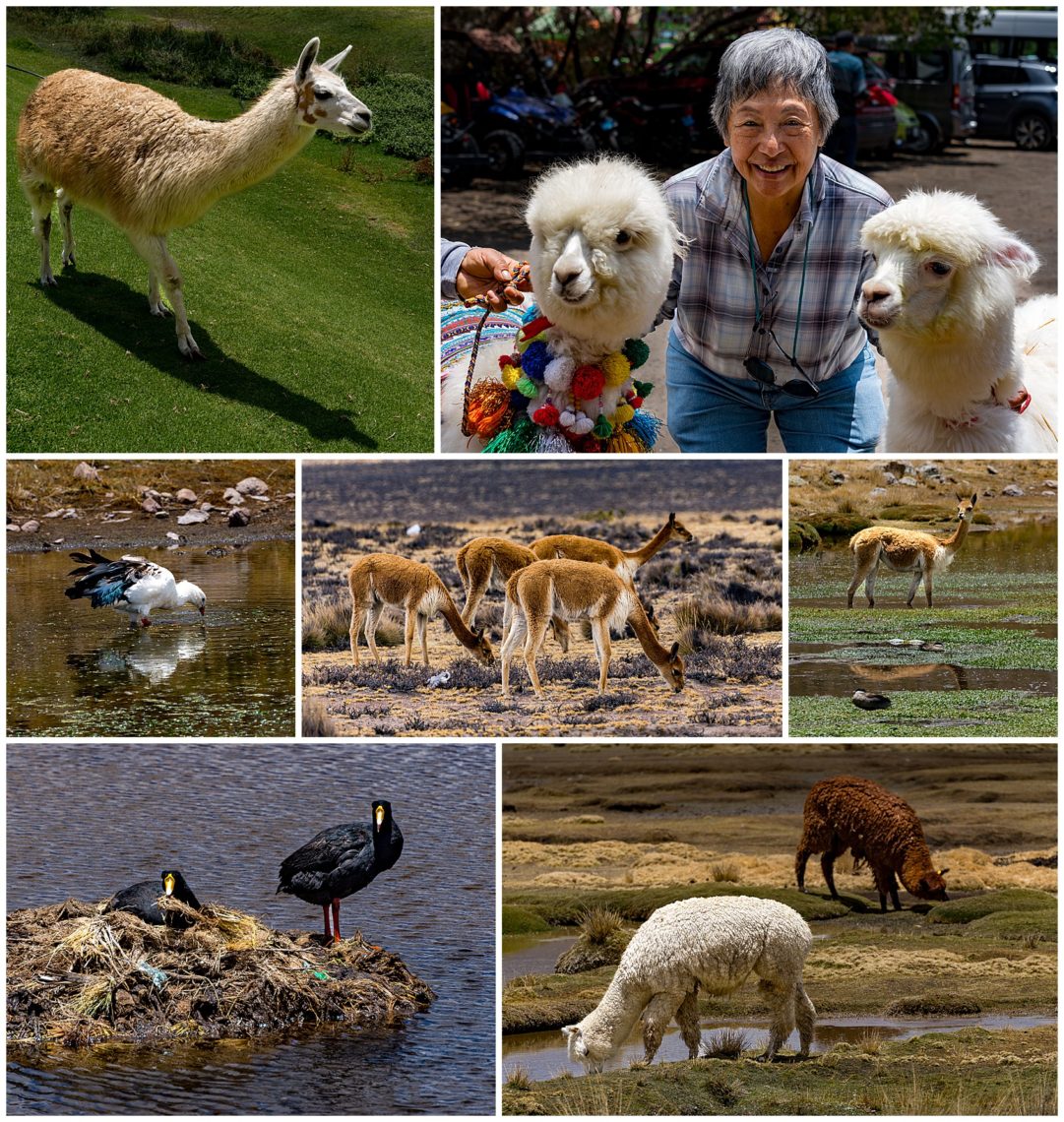
We then had a long drive to Lake Titicaca, which was our next target destination, by traveling through Colca Canyon, famed for being deeper than the Grand Canyon.
Along the way, we saw hundreds of llamas, vicuna, alpaca, sheep, and various birds, including a condor. At one rest stop, a woman presented two decorated llamas, and Evelyn took the photo opportunity (upper-right).
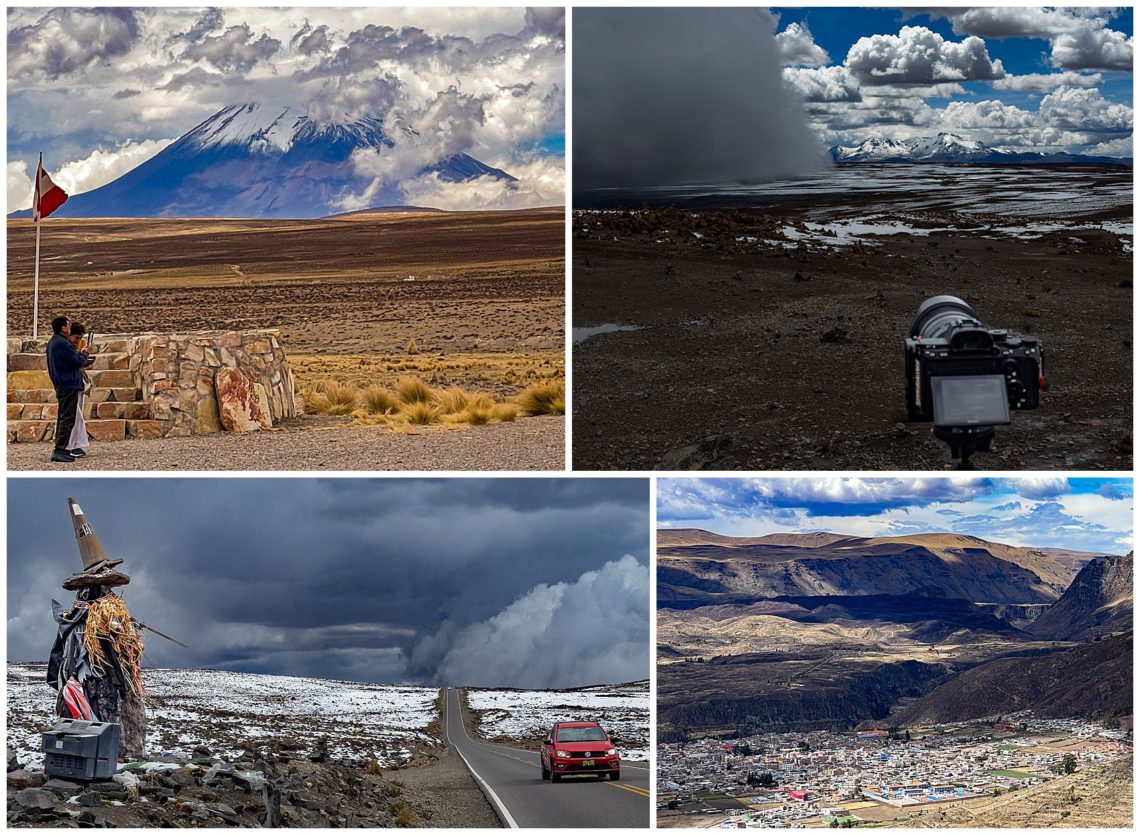
The road was mostly long and straight (bottom-left). At one rest stop, we could see a storm coming (upper-left). As Burt was taking a time-lapse of the storm, a massive cloud bank could be seen moving across the landscape (upper-right). At one point, someone had placed a whimsical witch to overlook the road (lower-left). As we approached Chivay, we took a photograph of the city surrounded by the Andes mountains (lower-right).
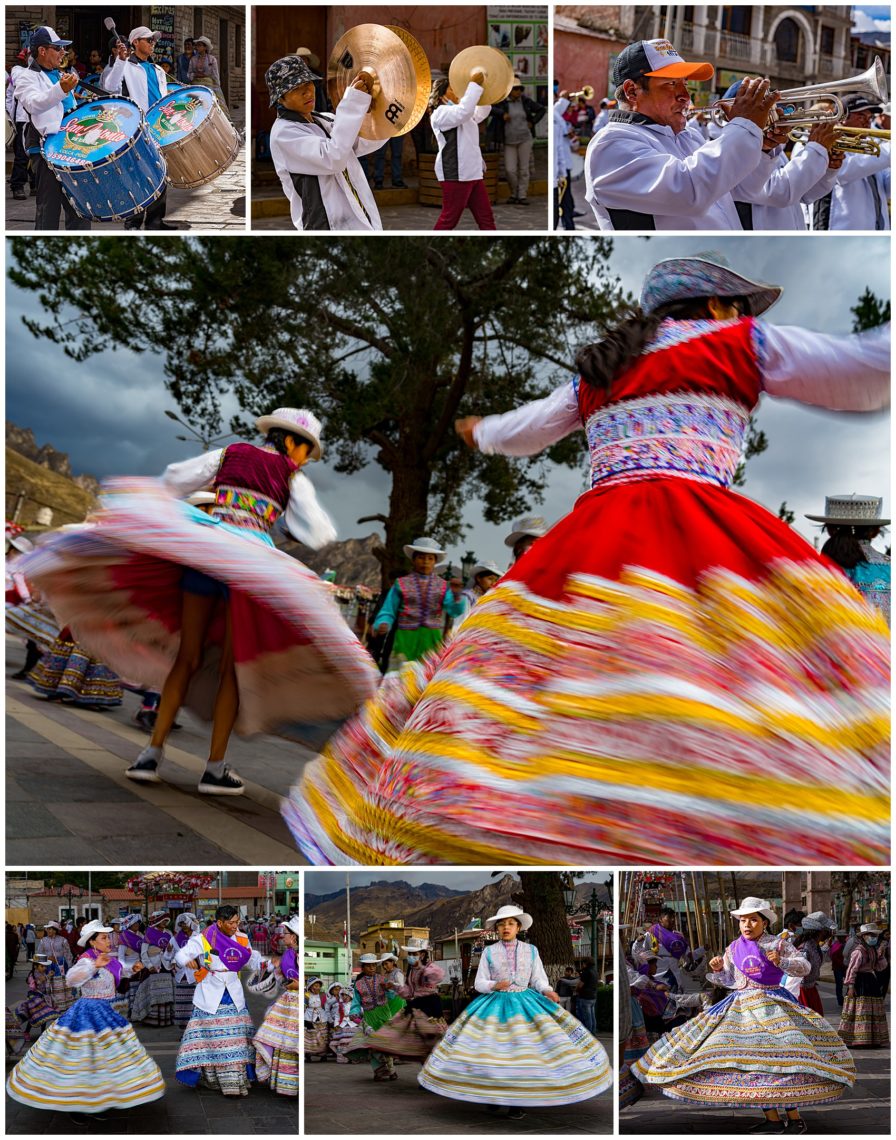
We entered Chivay for a lunch stop, and were pleasantly surprised to find a parade in progress. The town was celebrating the festival of the Immaculate Conception on December 8th. The band circled the main square several times (top row), with women in flowing traditional costumes twirling to the music (center and bottom row)
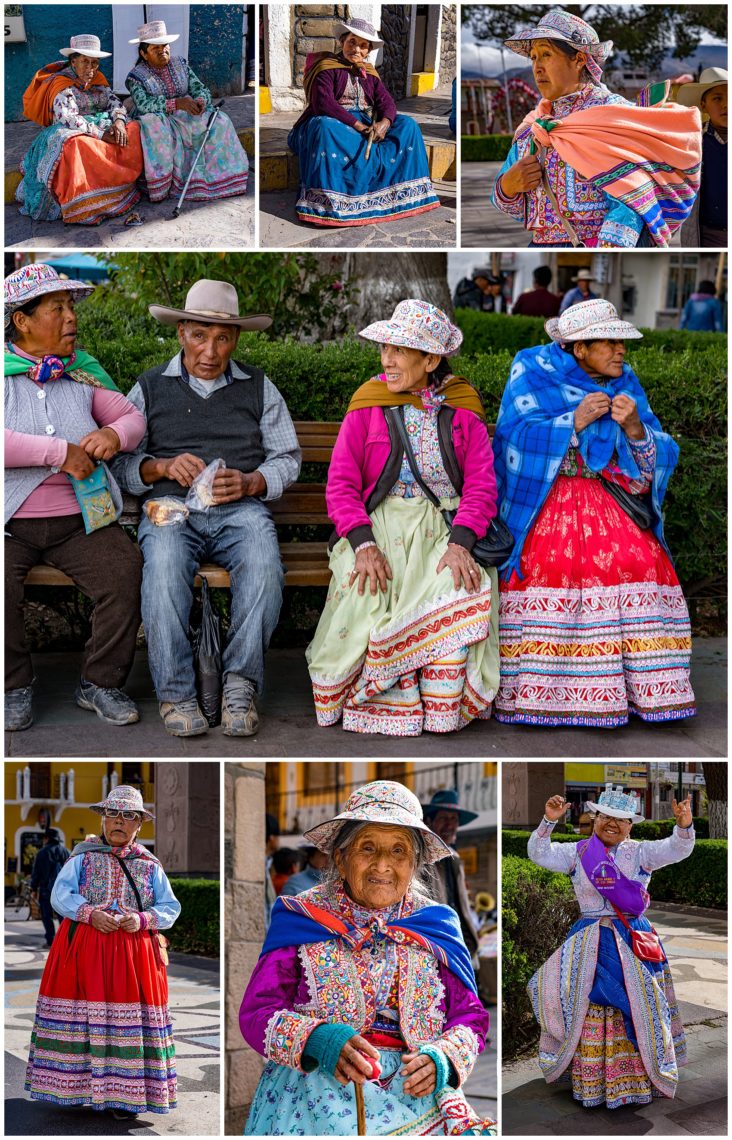
All the women were dressed in their finest traditional costumes for the festival, even if they were not part of the parade. The men were more of a mixed bag, with some more dressed-down for the occasion (center).
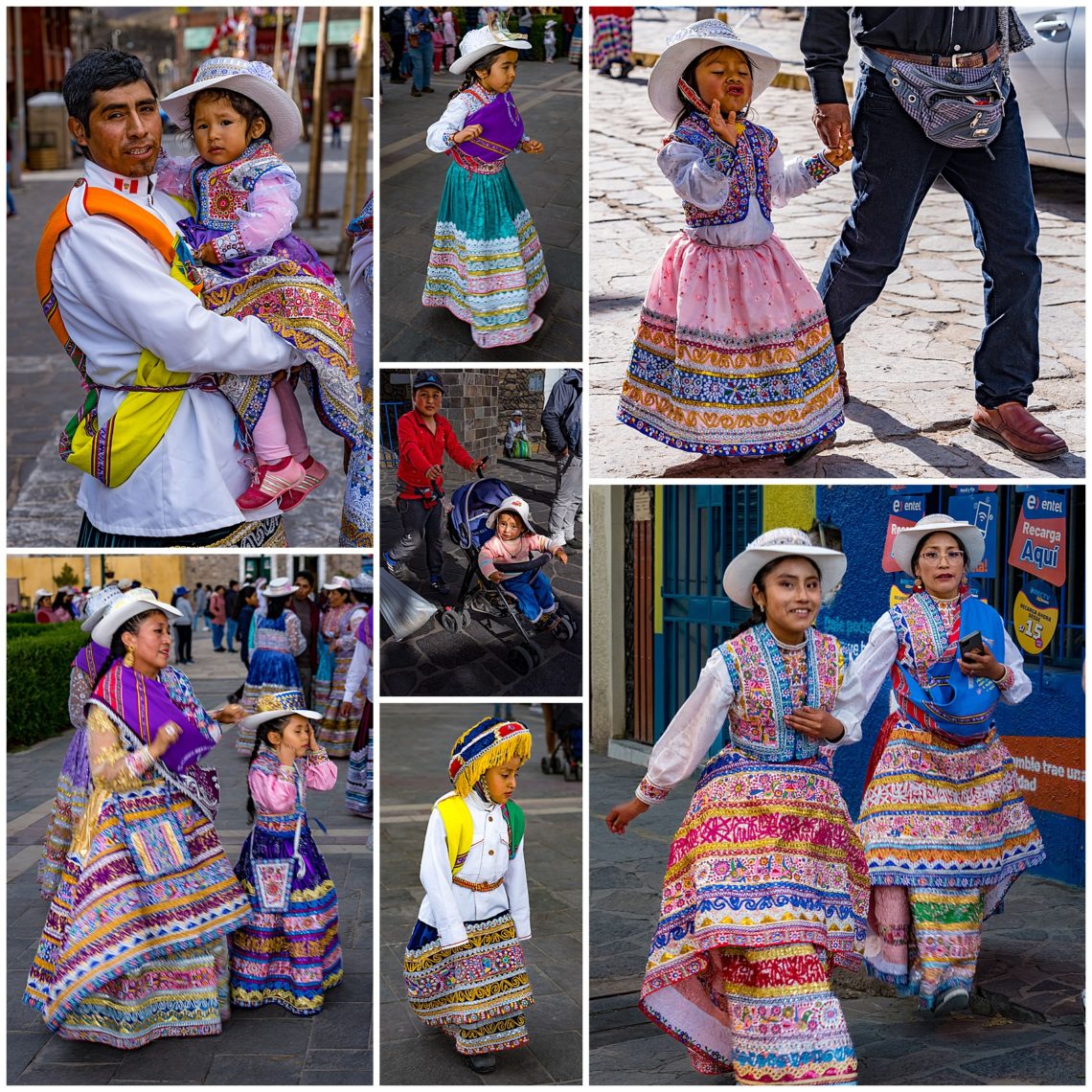
All the children were also dressed up, even if they were too young to know what was going on (upper-left and center).
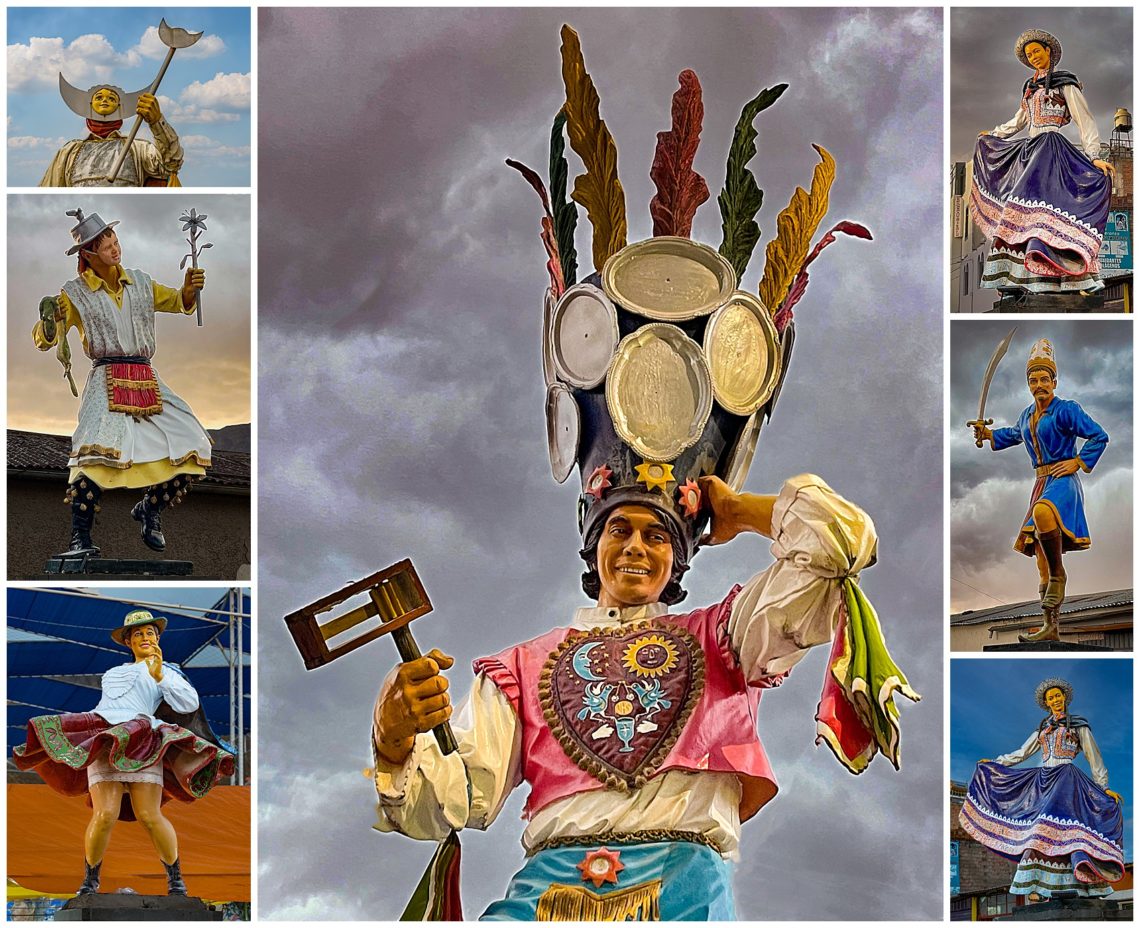
Throughout the town were a series of statues (both in Chivay and other small villages in the region). We were told that they are intended to show the festivities to those outlying communities that may have not been able to travel to the town for the festival.
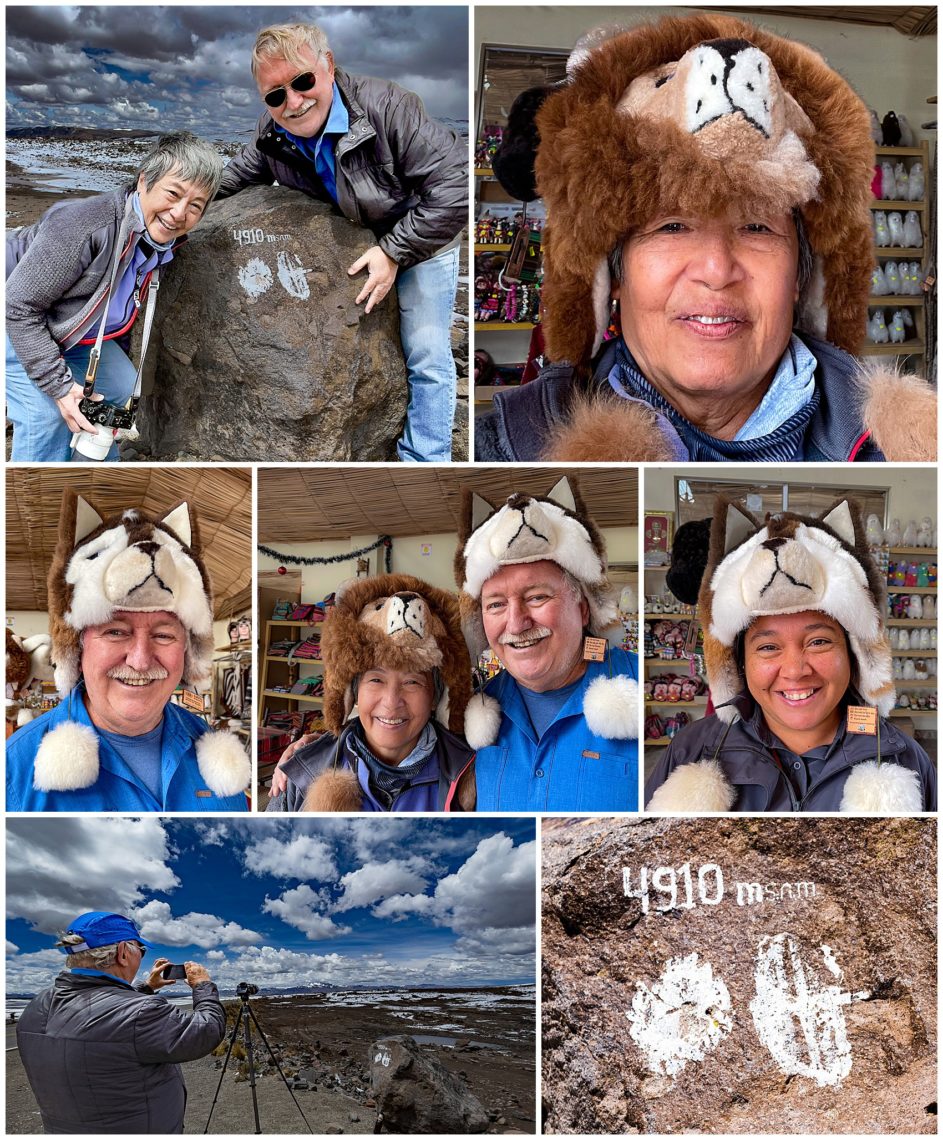
Our highest pass was at 16,100 feet (upper-left and lower-right)! We spent two hours at this elevation with no noticeable altitude symptoms. A gift shop and rest stop near the top had several animal themed fur hats — it was COLD at that altitude! We all tried them on of course, though we did not buy any. Evelyn is seen upper-right, Burt middle-left, and both of them center. Our guide that made the trip so enjoyable, July, is seen also trying one on middle-right.
Bottom-left is a bit of a Droste effect. Burt often stopped to take time-lapse of the storms in the mountains, and can be seen here using an iPhone to show the Sony camera shooting the mountainscape. Evelyn then caught those two, making the picture-in-picture-in-picture effect… ☺
You can watch 85 seconds of the parade here, to get a more concrete sense of what it felt like being there.